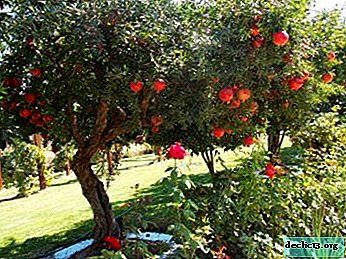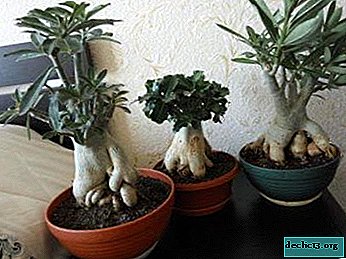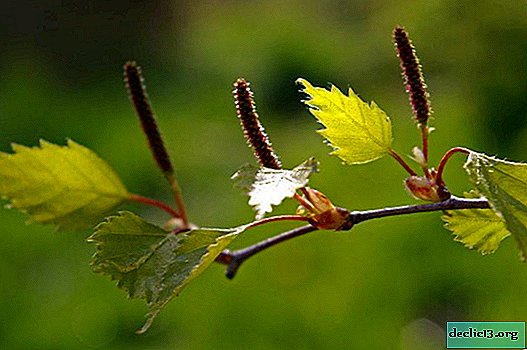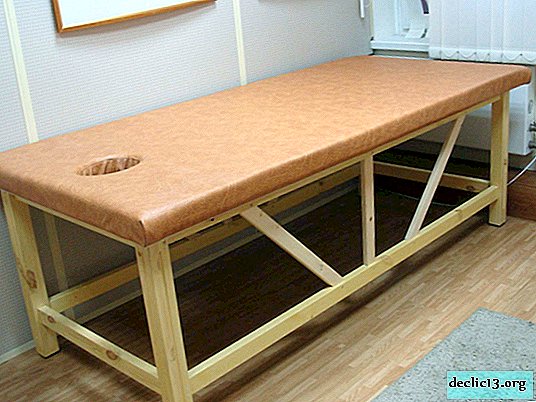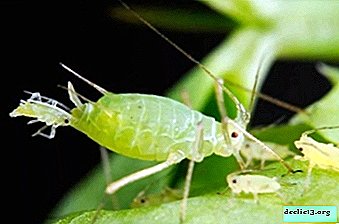Diseases and pests of room gerbera
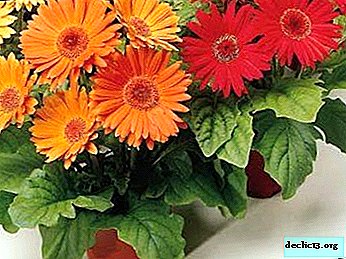
Gerberas, similar to multi-colored daisies, are loved for their unusual bright flowers. They can be found in the garden, on the clubs of flower beds, on window sills in pots.
But these delicate plants require careful care, as they are afraid of insect pests and are susceptible to many fungal diseases.
Preventive measures and timely treatment will not let these amazing creatures die. In this article, we consider the most common diseases of indoor gerbera, as well as what pests exist. Together we will learn how to effectively treat your favorite flowers, because it is no secret to anyone, gerberas are one of the most common indoor plants.
What could be the reason?
Gerbera is a perennial herbaceous flower from hot Africa. Today, about 70 species of this plant are known. Most gerberas are grown in flower gardens and gardens. In indoor floriculture it is possible to grow only a miniature and not too capricious Germs gerbera.
IMPORTANT! This flower, like many indoor plants, is susceptible to various diseases. But often the cause of his poor condition is not pests or infections, but improper care and uncomfortable growing conditions.Examples:
- If the leaves turn pale and lose their color, then the main reason is excessive lighting. To fix this, the flower pot must be moved away from the window in a dark place.
- If the leaves are pale and the stems are longer and thinner, then the plant in this case, on the contrary, lacks sunlight. The flower should be placed on the windowsill on the south side, where there is more sunlight.
The cause of a plant's disease can be:
- Poor root system.
- Incorrect watering and lighting mode.
- Plant damage by pests.
Read about how to care for potted room gerberas here, and from this article you will learn about the nuances of planting and caring for a garden plant.
Photo
Next, you can see a photo of diseases of room gerbera and methods of treatment:


Fungal diseases
Alternariosis
 Symptoms:
Symptoms:
- The leaves and petioles of the plant affect red-brown spots of various sizes. In some cases, spotting is concentrated in certain areas.
- During the development of the disease, the spots become a little lighter in the center.
- With excessive humidity, a velvety coating of dark color appears on the spots.
- The leaves acquire a yellow tint, as with burns (about why the leaves at room gerbera turn yellow and what to do for prevention, read here).
- The pathogen is stored in soil and plant debris for a long time.
Causes:
- Too hot dry air in the room.
- High humidity of the environment and soil.
- Improper or insufficient feeding and, as a result, depletion of the substrate.
Methods of struggle:
- Do not let the flower weaken from lack of nutrition.
- Protect it from excessive waterlogging.
- If the first signs of the disease are detected, treat the plant with the systemic fungicide Ridomil Gold.
Gray rot
 Symptoms:
Symptoms:
- A gray coating appears on the base of the leaf, peduncles and flowers.
- Affected areas fade.
- With the development of the disease, a gerbera can die completely.
- The pathogen is stored in plant debris and land for more than a year.
- A plant is infected, usually through soil or water.
Causes:
- Too high humidity.
- Waterlogging of the substrate.
- Excess nitrogen in the soil.
Methods of struggle:
- Follow agricultural standards, maintain optimal humidity of air and soil.
- If a disease is detected, treat the plant with a systemic fungicide: Rovral or Fundazole.
Cucumber Mosaic
 Symptoms:
Symptoms:
- On the leaves of the flower appear spots of various shapes of yellow-green color with sharply limited edges.
- With the development of the disease, sheet plastic is deformed.
- Pigmentation of leaf veins may also be observed.
- Plant necrosis develops.
- This virus spreads with the help of insects with stitching mouthparts, such as aphids.
- Otherwise, the virus can be introduced onto the plant mechanically.
- In the soil, this fungus is not preserved.
- The most active virus at the end of the plant growing season.
Causes:
- Lack of sunlight.
- High humidity.
- Too cold air.
Methods of struggle:
- Monitor humidity and ambient temperature.
- Preventive treatment of the flower with insecticides.
Late blight
 Symptoms:
Symptoms:
- Sick leaves dry from the outside of the outlet.
- Further, the leaves dry out from the inside.
- The flowers fall, the roots rot and the plant dies.
- The fungus lives for a long time in the substrate and plant debris.
- The disease spreads through air and soil.
Causes:
- An excess of fertilizing.
- Excessive waterlogging of the substrate.
- Temperature too high.
Methods of struggle:
- Follow the proper agrotechnics of growing plants. Use aerated, loose substrate.
- At the first signs of the disease, stop watering, partially change the substrate to a drier one.
- Use fungicidal preparations: Ridomil, Profit Gold or Previkur.
Sclerotinia
 Symptoms:
Symptoms:
- The plant begins to quickly wilt.
- Indented spots form on the base of the leaves and on the peduncles, on which white and gray plaque subsequently forms.
- The pathogen is stored in the ground for a long time.
Causes:
- An excess of moisture in the earth.
- Excessive overfeeding with organic fertilizers.
- Temperature too high.
Methods of struggle:
- Change the substrate to a lighter, aerated one.
- Do not over-moisten and periodically ventilate the soil.
- Use systemic fungicides Vitaros or Fundazol.
Powdery mildew
 Symptoms:
Symptoms:
- Powdery mildew is most observed in young plants.
- Petioles of the flower are covered first with white, and then with a gray-white coating.
- With the development of the disease, all plants are affected with spots on the plaque.
- Leaves, peduncles and buds dry out and the flower dies.
- The pathogen is airborne and stored in plant debris for a long time.
Causes:
- High humidity.
- Too high temperatures.
- Lack of calcium in the soil.
- Excessive dressing.
Methods of struggle:
- Do not over-moisten the soil, observe the temperature regime, provide sufficient lighting for the plant, ventilate the substrate.
- Use Topaz and Fundazole fungicides.
Pests
The most common pests of domestic plants and gerberas, including aphids, whiteflies and spider mites.
Aphid
 This pest, almost invisible to the eyes, spreads very quickly throughout the plant. This dangerous insect can enter a room through a window or balcony. Lives in large colonies, feeds on plant sap.
This pest, almost invisible to the eyes, spreads very quickly throughout the plant. This dangerous insect can enter a room through a window or balcony. Lives in large colonies, feeds on plant sap.
How to fight:
- To get rid of the pest, the plant needs to be treated several times with a strong insecticide. For these purposes, Intavir, Fitoverm or Karbofos are suitable.
- Then the flower leaves should be washed with warm water and gently wiped. These measures in most cases help get rid of pests.
Whitefly
 Whitefly also feeds on the sap of the plant, which is why they turn yellow and fall off. The insect reproduces very quickly. The most dangerous larvae of this species are difficult to get rid of.
Whitefly also feeds on the sap of the plant, which is why they turn yellow and fall off. The insect reproduces very quickly. The most dangerous larvae of this species are difficult to get rid of.
How to fight:
- Wash the gerbera with soapy warm water.
- Keep the infected plant away from healthy pets.
- Treat the soil with a preparation with a high concentration of permethrin.
- You need to water the flower every 3 days until it recovers and begins to grow again.
Spider mite
 On the leaves of the gerbera appear nets of the finest cobwebs. Spider mites feed on leaf juice, as a result of which they turn yellow and begin to fall. This pest appears with insufficient watering and excessive air dryness.
On the leaves of the gerbera appear nets of the finest cobwebs. Spider mites feed on leaf juice, as a result of which they turn yellow and begin to fall. This pest appears with insufficient watering and excessive air dryness.
How to fight:
- Spray the plant with onion or garlic solution. Recipe: 1 liter water 20 grams of garlic or onion peels.
- You can wipe the leaves and trunk of the flower with cotton wool with medical alcohol.
- If this does not help, use Actellik, Fitoverm or Neoron insecticides.
Prevention
In order for gerberas to be highly resistant to diseases and to resist pathogens well, it is necessary to apply a number of preventive measures to strengthen and improve the flower:
- Carefully inspect the flower before buying for diseases and pests.
- Steaming the substrate before planting is the best way to disinfect.
- Control the acidity of the soil and the plant is properly nourished.
- Observe proper temperature conditions, do not overheat and do not supercool the gerbera, otherwise its leaves will begin to curl and fall off.
- Arrange for proper and adequate lighting.
- Water regularly, but carefully adjust the irrigation so that excessive moisture does not form, due to which pathogenic microflora can develop.
Conclusion
Observing these simple rules for caring for gerbera, you will save the plant from many diseases. Do not be very upset and upset if you have a sick favorite flower. This can happen even with an experienced grower. Just help the gerbera get rid of pests and diseases, and it will delight you with beautiful and strong flowers for a long time.





